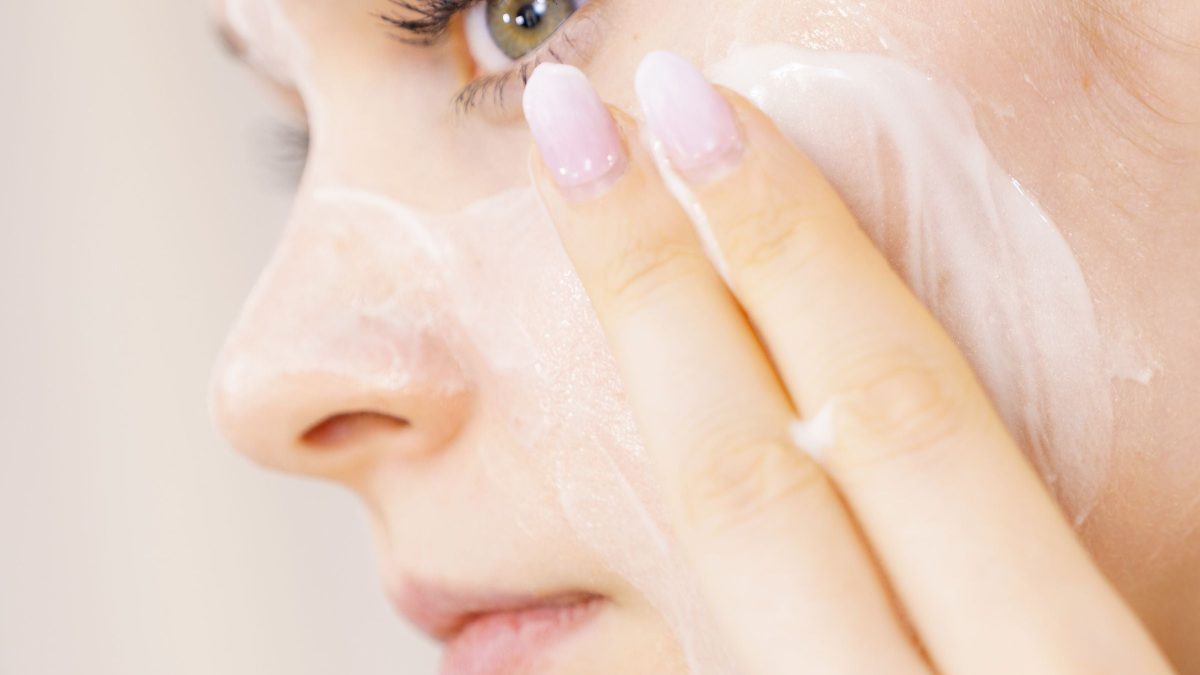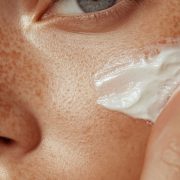Learn Product Layering for Optimal Results!
Posted on October 21, 2024 Written by: 100% PURE®

Imagine brushing your teeth after drinking orange juice—yikes, right? That’s what applying skincare out of order is like!
ensures they work effectively, allowing active ingredients to penetrate the skin and do their magic.
When applied right, skincare is a symphony, but mix it up, and you’re just wasting good products and money. Follow the order for that glow-up you deserve.
Understanding Skincare Absorption
depends on how well products penetrate the skin’s layers. The skin barrier, made up of the stratum corneum, acts as a gatekeeper, letting in only what it deems necessary.
Factors like molecule size, skin type, and environmental conditions affect how much of your product actually gets through. That’s why consistency matters. Thinner, water-based products absorb quicker, delivering active ingredients faster, while thicker, oil-based products take longer but help lock in moisture.
Following the “thin to thick” rule—starting with serums and ending with creams—ensures maximum absorption. Water-based products come first to hydrate, while oil-based ones seal everything in, optimizing your routine for better skin health!

The Correct Order of Skincare Layering
In an , each step serves a unique purpose, from prepping the skin to locking in moisture and protecting it from external damage. By layering correctly, you give your skin the best chance to soak up all the goodness from your skincare. Here’s how to nail the perfect order:
- Cleansing
Cleansing is the foundation of any good skincare routine. It removes dirt, oil, and impurities that accumulate on your skin throughout the day, preventing clogged pores and breakouts. For makeup wearers, the is key—starting with an oil-based cleanser to break down makeup and sunscreen, followed by a water-based cleanser to clean deep into the pores.
- Toning
Toning goes beyond just after cleansing; it also clears any leftover debris and preps the skin for better absorption of serums and treatments. Modern toners often include hydrating, soothing, or exfoliating ingredients, such as hyaluronic acid or AHA/BHAs, targeting issues like dryness or texture. It preps the skin to absorb the treatments that follow more effectively.
- Treatments and Serums
Treatments and serums are where you target specific skin concerns like wrinkles, dark spots, or acne. Water-based serums should go on first, as their lightweight consistency allows for quicker absorption. If using targeted treatments such as acne spot treatments, apply them afterward to treat specific areas.
- Eye Cream
The skin around your eyes is thinner and more delicate, making it prone to dryness, fine lines, and puffiness. Eye creams are specially formulated to treat this sensitive area without irritation. By applying eye cream before your moisturizer, you allow the product to penetrate the delicate skin more effectively, avoiding competition from heavier moisturizers.
- Moisturizer
Moisturizers create a protective layer that prevents moisture loss throughout the day or night. Daytime moisturizers are typically lighter and may contain SPF to protect against UV damage, while night creams are often richer, designed to nourish and repair the skin as you sleep.
- Face Oils
Face oils act as a final layer, sealing in all the moisture and nutrients from your routine. They help form a protective barrier against environmental damage, locking in and preventing trans-epidermal water loss.
- Sunscreen (Daytime)
Sunscreen is the most crucial step in any daytime skincare routine. It shields your skin from harmful UV rays, preventing premature aging, hyperpigmentation, and skin cancer. Sunscreen should always be the last step in your routine because it forms a protective barrier that other products can’t penetrate.
Balancing Effectiveness and Time Management
The desire for comprehensive skincare often clashes with the need for a practical routine, especially in today’s busy world. Many people feel overwhelmed by the sheer number of products available and aren’t sure which ones are essential for their specific needs.
Concerns about product interactions, such as layering active ingredients like retinol and vitamin C, only add to the confusion.
Finding a balance between effectiveness and efficiency is key. Start with a few core products—cleanser, moisturizer, and sunscreen—and build from there, focusing on treatments for specific concerns without overloading your skin or your schedule.
Navigating Product Claims and Marketing
Skincare marketing often pushes “miracle” products that promise fast, flawless results, making it hard to know what really works. Many brands claim their products will transform your skin overnight, leading to unrealistic expectations. In reality, skincare is a long-term commitment, and not all products layer well together.
Overusing active ingredients or experimenting too quickly can even cause irritation. Understanding is necessary. Rather than chasing every new trend, it’s best to research ingredients, consult with dermatologists, and experiment slowly to find what suits your skin’s unique needs and achieves lasting results.

Customizing Your Routine
Creating begins with assessing your skin’s specific needs. Whether you struggle with dryness, oiliness, acne, or aging, identifying your primary concerns helps in selecting the right products.
Choose key items—like a gentle cleanser, targeted treatments, and a moisturizer—that address these issues. Adapt your routine for different times of the day: use lighter, hydrating layers in the morning and more intensive treatments like retinol at night.
, as skin tends to need more moisture in colder months and lighter layers during warmer weather to maintain balance and health.
100% PURE Products for Optimal Layering
100% PURE is a standout brand in the skincare industry, known for its commitment to using natural, high-quality ingredients that are free from harmful chemicals. With our products, you can create a routine that will nourish your skin and address its unique needs.
1. Start with the to hydrate and prep the skin for better absorption of the following products.
2. Next, apply the in the morning to brighten your complexion and protect against environmental damage.
3. At night, the works to nourish and repair skin while you sleep.
4. Follow with the , rich in antioxidants, to provide moisture and protect against signs of aging.
5. Finally, lock in hydration with the , which encourages cell renewal and rejuvenates the skin overnight for a youthful glow.
Conclusion
Mastering the principles of skincare layering is essential for optimal results. Remember to personalize and refine your routine based on your unique skin needs. By implementing proper layering techniques with high-quality products, you can enhance your skincare results, achieving a radiant and healthy complexion.
Frequently Asked Questions
How long should I wait between applying each skincare layer?
It’s generally recommended to wait about 1-2 minutes between applying each layer to allow the products to absorb effectively. For heavier products, like creams or oils, you may want to wait a bit longer to ensure they don’t interfere with the absorption of lighter products.
Can I mix multiple serums together to save time?
While mixing serums can save time, it’s essential to ensure that the ingredients are compatible. Some actives, like retinol and vitamin C, may not work well together, potentially leading to irritation or reduced effectiveness. If unsure, it’s best to apply them separately for optimal results.
Should I use the same layering order for morning and night routines?
Generally, the layering order remains consistent, but the products may differ. For morning routines, focus on hydration and protection, such as sunscreen. At night, incorporate treatments like retinol or thicker creams aimed at repair. Adjust your routine based on your skin’s needs at different times of day.
How do I incorporate weekly treatments like masks into my layering routine?
Weekly treatments like masks can be incorporated after cleansing and before toning. Apply your mask according to the product instructions, then continue with your toner, serums, and moisturizers. If using an exfoliating mask, follow up with a hydrating serum to restore moisture.
Is it possible to layer too many products, and if so, what are the signs?
Yes, layering too many products can overwhelm your skin, leading to signs like irritation, redness, breakouts, or clogged pores. If your skin feels heavy, greasy, or you experience increased sensitivity, it may be time to simplify your routine and focus on fewer, high-quality products that suit your skin type.




